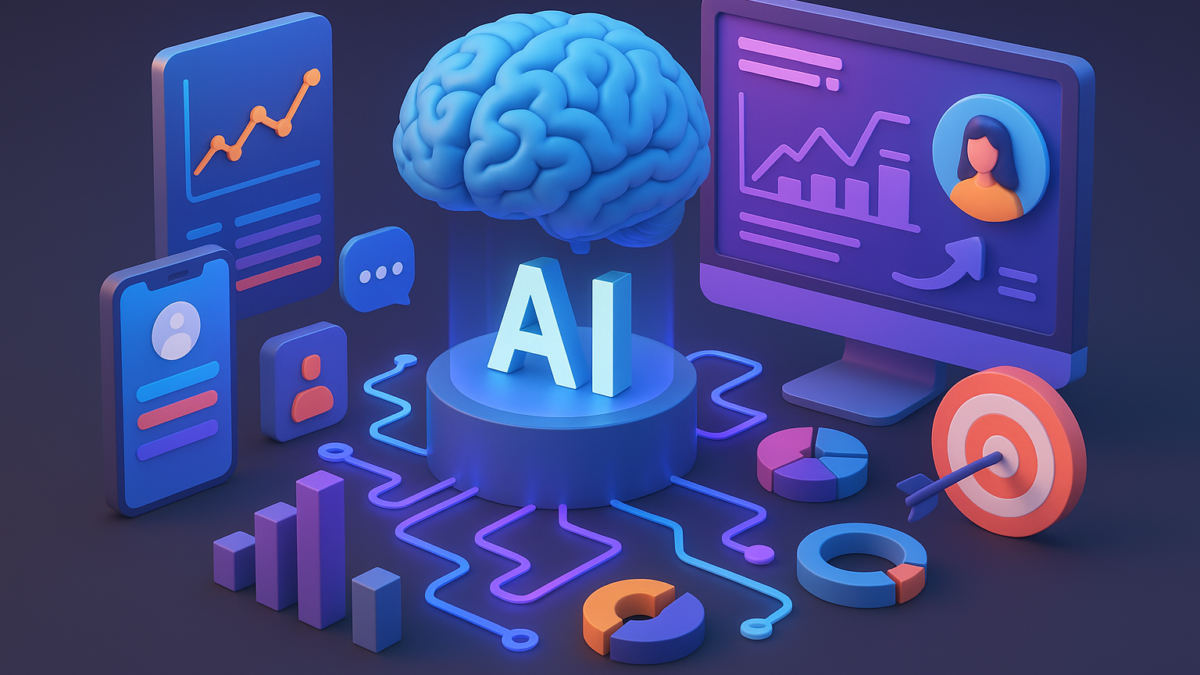The Future of MarTech: How AI, Data & Personalization Are Redefining Marketing in 2025 and Beyond
Table of Contents
Marketing technology—or MarTech—has become the backbone of modern marketing. What began as a collection of email tools and CRM platforms has evolved into an intelligent ecosystem powered by AI, automation, analytics, and personalization.
As we move deeper into 2025, the MarTech landscape is entering a new era—one where data and creativity merge, where every click generates insight, and where technology no longer supports marketing but drives it.
Let’s explore how MarTech is changing and what the future holds for brands and marketers.
1. AI Is the New Marketing Brain
Artificial Intelligence is no longer an optional add-on—it’s the core engine behind MarTech innovation. From predictive analytics to content generation, AI is helping marketers understand audiences, predict behavior, and personalize experiences like never before.
AI tools in MarTech can now:
- Predict customer churn with near-perfect accuracy
- Automate campaign optimization in real time
- Generate data-backed content that aligns with user intent
- Personalize experiences across web, email, and social platforms
Marketers using AI-powered MarTech platforms report a 35% increase in ROI, thanks to smarter targeting and reduced ad waste.
2. Data Privacy and Ethical Marketing Take Center Stage
While AI enhances efficiency, it also raises important questions around data privacy and ethics. As regulations like the GDPR and CCPA tighten, marketers are rethinking how they collect and use consumer data.
The future of MarTech will prioritize:
- Zero-party data strategies (where users willingly share preferences)
- Ethical data use to maintain trust
- Transparent consent systems that empower users
Brands that embrace transparency and responsible data use will build long-term customer loyalty—a crucial differentiator in an age of privacy-first marketing.
3. Hyper-Personalization Through Data Integration
In 2025, personalization goes beyond using someone’s first name in an email. Marketers are now crafting dynamic, contextual experiences—powered by unified customer data platforms (CDPs).
These systems bring together data from CRM, analytics, social media, and ad platforms to create a 360° customer view. The result?
- More accurate segmentation
- Smarter cross-channel campaigns
- Predictive recommendations at every touchpoint
For instance, a fashion brand can use MarTech to recommend outfits based on weather forecasts and purchase history—showing how deeply integrated personalization has become.
4. Automation and No-Code Platforms Empower Marketers
One of the biggest shifts in the MarTech future is democratization. No-code and low-code tools now allow marketers to build workflows, launch campaigns, and integrate systems without needing a developer.
These platforms save time, reduce dependency on IT, and let creative teams focus on strategy over setup.
Expect to see:
- Marketing automation tools with drag-and-drop AI workflows
- Integrated dashboards offering unified campaign control
- Predictive triggers that automate actions based on behavior
Automation is transforming marketing teams from reactive to proactive operators, capable of launching adaptive campaigns at scale.
5. The Rise of Predictive and Contextual Marketing
With access to massive datasets, MarTech tools are shifting from reactive analytics to predictive intelligence. Predictive models analyze patterns to anticipate what users want before they even search for it.
Combine that with contextual marketing—ads that adapt based on real-time context—and brands can deliver messages that feel natural and relevant.
Imagine an app that automatically adjusts its offers based on your mood, location, and online behavior. That’s not science fiction—it’s the next phase of MarTech evolution.
6. The Integration of AR, VR, and the Metaverse
The future of MarTech also lies in immersive experiences. With AR (Augmented Reality) and VR (Virtual Reality), brands are creating interactive environments where consumers can engage beyond traditional ads.
From virtual try-ons to immersive brand stories, AR and VR campaigns are transforming passive viewers into active participants. These technologies are redefining engagement metrics and reshaping how brands measure success.
7. The Next-Gen MarTech Stack: Connected, Adaptive, and Intelligent
The MarTech stack of the future will be smarter, lighter, and more connected. The days of bulky, siloed platforms are fading. Instead, marketers are adopting integrated ecosystems that communicate seamlessly via APIs.
Key characteristics of the next-gen stack include:
- Unified data flow across platforms
- AI-powered insights dashboards
- Real-time collaboration tools for hybrid teams
The winners in this space will be brands that adopt flexible, modular systems that can evolve with market needs.
Conclusion: The Marketer’s Role Is Evolving
The future of MarTech isn’t about replacing marketers with machines—it’s about enhancing human creativity with intelligent tools. Marketers of the future will be strategists, storytellers, and data interpreters who use technology not as a crutch, but as a catalyst.
The next few years will reward those who blend data, empathy, and innovation—creating meaningful connections in a hyper-automated world.
Maximize Your Content ROI. Contact Us for Custom Syndication Solutions.
See Also: From Downloads to Demand: How to Turn Whitepaper Leads into Revenue





